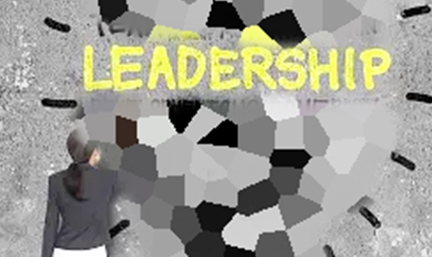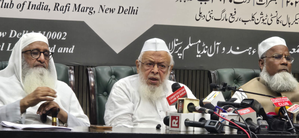Demystifying the idea of leadership
New Delhi: The current literature on ‘Leadership’ mostly deals with individual paradigms of what is essentially an integral concept and it often does this in a manner that overemphasised at best only a particular facet of leadership presenting it as the exclusive hallmark of the success of the leader.
Nothing illustrates this better than the expansive writings on VUCA — a term said to have been used by the US Army post-Cold War — to describe the challenge leaders faced in handling a situation that was marked by volatility, uncertainty, complexity and ambiguity.
In the world of business as also in the area of security concerns of the nation, it is now acknowledged that the success of the Information Technology revolution, with 1991 as its cut-off year, created a new world — called the Age of Information — where ‘change was the only constant’.
The advent of VUCA was a reinforcement of the fundamental plank of leadership in the new world whose mandate was that ‘knowledge-based decision-making’ was a prime determinant — though not the only one — of a leader’s success.
A leader has to be a decisive person and his decisions are based not on ‘charisma’ or ‘inheritance’ but on information that bridged the gap between a ‘decision’ and a ‘guess’.
The added demand now is that a decision may have to be taken on knowledge that was not as complete as the leader would have liked it to be and this puts primacy on the leader’s ‘imagination’ which is a gifted trait that enabled the leader to see beyond the information available in the present and visualise what would be the ‘shape of things to come’.
Being well-informed on various relevant spheres in any context is therefore a basic requirement of a successful leader. Corporates recognise the importance of knowledge-based decision-making and employ professional teams to collate and analyse what is called ‘business Intelligence’ available externally as well as from within the organisation.
Correctly interpreting what looked complex and ambiguous in an environment of volatility and uncertainty, is of great help in reaching the right decisions.
A successful CEO today uses the totality of information available to him and also derives benefit from his or her own experience of the world — not only of a particular line of business — in taking the judgement call.
If a good decision is based on knowledge, decentralisation of decision-making — the hallmark of a successful corporate entity — would also be logically rooted in that idea particularly when relevant information available in the organisation, was all supposed to be shared down the line. It is this emphasis on being well-informed that has given newfound importance to ‘feedback from below’ – ‘machine learning’ is a gift of modern technology serving the same cause.
All business is human activity and the content of leadership is synonymous with the ability of the leader to interact with the ‘followers’ as well as with the people at large.
The persona of a leader must satisfy three fundamental requisites — authenticity, understanding of human nature and responses and impartiality about awarding credits to others.
Authenticity is measured by the self-confidence of the leader, reputation about the fulfilment of promises made and adoption of the organisation’s value system in thought and deeds. Leadership is thus a combination of inherent merits and acquired learning.
More specifically, a leader can task the people while leading them in pursuit of an initiative but he or she must constructively be in a position to give guidance on any matter brought to the leader’s notice.
A leader does not have to fish for credits — whatever the achievement of any teams under him, he gets praised for the same at the hands of the world outside — his responsibility is to ensure an even-handed distribution of awards internally.
A leader has to be sensitive to human situations- this flows from the leader’s understanding of the human psyche and behaviour. On the work front, a boss should be a good leader too and must know his people well — even to the extent broadly of being aware of the situation of a subordinate at home that might be causing personal stress and anxiety to the latter.
A leader should know all about teamwork and the factors that enhance the team’s productivity. An understanding of the cultural diversity of the workforce — that made a difference even in a simple matter like the idea of what ‘leisure’ is — becomes crucial.
The leader knows that a multicultural team can be the storehouse of energy and productivity. In the final analysis, the success of a leader has to be measured by the ability to attract followers, hold on to them and push them ahead towards a mission.
It is the cross-spectrum responsibility and accountability of the leader that needed to be defined and understood by all stakeholders of the organisation, corporate entity and the nation as the case may be — this often is the least discussed aspect of leadership.
A leader can be evasive about his share of responsibility but only for a while because within the organisation this negative trait would not remain hidden for long and lead to an irreversible loss of reputation for the individual. A senior — in one particular case — used the tactic of saying ‘please speak’ on the file and after the discussion with the junior was over, returning the file to the latter with the comment ‘as discussed’ – thus maintaining the scope for complete deniability in the event of something going wrong with the decision.
He came to be known as ‘Please discuss, As discussed Boss’ and never made it to the top in spite of his seniority. It should come easy to a leader to establish inner transparency, follow a methodology of work that was not ‘coterie’-based and create an acceptable code of ethics for the organisation.
He must ensure a tension-free environment within, encourage the members to follow the tradition of ‘seeking and giving help’ and enhance productivity by letting people work with greater concentration -not weighed down by the ‘worries’ of the office.
A leader promotes an aura of ‘participative management’ by presenting the corporate goal in a manner that emphasised the contribution of one and all within the organisation.
Army’s management combines the power of command with the message that the success of an operation was the success of the entire vertical hierarchy ranging from the battlefield to the High Command.
In the final analysis, the position of a leader is one of ‘responsibility’ not merely of ‘status’ and this responsibility includes a ‘nurtural’ role of mentoring those who were working for him.
Leadership ultimately is a measure of what the person in that position ended up doing for others — not merely for his or her own ‘enrichment’. This is a somewhat spiritual-sounding mandate but it is true. When you end your innings in your leadership position, that measure will be reflected in the esteem that your former team members will hold you in. This is comparable to the abstract definition of ‘education’ as something that was left behind when you finished a book and forgot about it.
Will a leader emerge on the horizon if there was no opportunity coming his or her way? Does a leader have to work for his leadership? Is there a challenge of competition in building yourself as a leader? Can a leader stay on when everything else around was prone to shifting? And does a leader stand on a higher pedestal on the scale of human quality than ordinary mortals?
As mentioned earlier, leadership combines some inherent qualities of a person with the experience-related growth achieved by the individual. Sensitivity towards human beings, a healthy curiosity that produces the spirit of inquiry which in turn was conducive to making the potential leader a well-informed person and the gift of a ‘macro’ vision, are a few of the traits built into the persona of the man who would lead others successfully. A leader observes what he sees, absorbs what he observed and uses what he absorbs for perceiving what lay ahead- he does not miss the wood for the trees. These three competencies can be built through the application.
A potential leader equipped with all of this does not miss an opportunity that is presented to him — he can in fact even ‘create’ an opportunity through a vigorous pursuit of the market if he wanted to enter the business world or of polity if he was inclined to take to the path of public life.
A leader no doubt has to work to further enhance his hold and efficacy and keep the initiative with him. Digitisation and the resultant globalisation have created a kind of competition that could arise from any part of the world and enable a less resourceful but ‘smarter’ player to take on the stronger rival. Moreover, a successful leader today has to reckon with sudden unforeseen shifts in the business environment that would test him for the capacity to handle the ‘challenge of change’.
A well-informed, confident and decisive leader would visualise the need for ‘course correction’ and ride the change instead of getting bogged down in it. A true leader is adept at handling human interactions since he understands human psychology and carries an adequate degree of ’emotional Intelligence’ required for this purpose. A leader therefore is gifted with qualities that made him somewhat special in relation to the average crowd.
To sum up, leadership does not come to everybody simply because the individual has to measure up to certain well-conceived paradigms that define it. These attributes can be summarised in the acronym DRINKS — denoting Decisiveness, Reliability, Initiative, Nerves, Knowledge-based decision making and awareness of the importance of Saving time considering that ‘time’ had emerged as the new ‘resource’ beyond funds, manpower and information.
Nerves here refer to that intrinsic courage of conviction that a leader can not do without. There can be many adds on for sprucing up one’s leadership profile but the six intellectual traits enumerated above represented the foundational qualities that would make for a formidable leadership.
Leadership, significantly, was never ‘static’ as it had to cater for a fast-changing business environment, breaks in supply chains and even geopolitical developments.
A leader rises above the details to quickly evaluate what was going on within the organisation and outside that was of lasting significance and has the inner strength to produce the right responses. In this, he has the advantage of being a good communicator who could convince his men of the merit of his decisions. In the final analysis, however, the power of ‘authenticity’ describes in one word the defining attribute of a successful leader.



